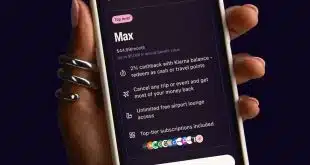Contactless cards were tried in the U.S. years ago and soon fell by the wayside, giving the technology a black eye among issuers. Now a report released Monday in the U.K., where contactless is catching on fast, could revive hopes for the technology.
Some 325 million debit and credit card payments, or 25% of all U.K. card transactions, were contactless in November, says the report, which was released by the UK Cards Association, a trade association for issuers and acquirers. Remarkably, this is up from 20% only three months earlier. And a year earlier, in November 2015, contactless accounted for just 11% of all card payments.
The London-based association credits the spread of contactless acceptance across business segments, including mass transit, for the rapid adoption by consumers. “With 125 taps every second in the UK, it’s clear that people are opting for contactless when they are at the till,” said Richard Koch, head of policy. “No longer is it just for the lunchtime sandwich. Consumers are using their contactless cards wherever they go—for the grocery shop, in clothes stores, and, increasingly, for the commute too.”
Contactless cards transmit account credentials to a point-of-sale terminal using radio waves, allowing cardholders to tap or wave their cards to complete a transaction. The cards were introduced and heavily promoted more than a decade ago in the U.S. by major issuers like JPMorgan Chase & Co., but failed to catch on with consumers. Since then, mobile wallets like Apple Pay, which use a contactless technology called near-field communication, have entered the market with middling results.
The U.S. rollout of EMV chip technology, which started in earnest in the U.S. about 16 months ago, has been expected by some industry observers to act as a catalyst for contactless technology, since its blink-of-an-eye transaction time contrasts favorably with the dipping of EMV cards at the point of sale. But certification logjams for contactless-capable EMV terminals have delayed availability at the point of sale.
In the U.K., which converted to EMV a decade ago, issuers have stuck with the technology, and higher caps on contactless transactions have helped spur usage. Greater availability at the point of sale has also helped. There were 439,623 bank-owned contactless terminals in the UK in November, up 44.5% from the start of the year, according to the UK Cards Association.
There are now 101.8 million contactless credit and debit cards, the association says, though consumers appear to heavily favor contactless debit. There are more than twice as many contactless debit cards (69.7 million) as credit cards (32.1 million). Some 88% of contactless transactions are performed with a debit card, compared to 78% of all card transactions. The average contactless ticket is $10.74 at current exchange rates, up 11% from a year ago.
Total spending on contactless cards in November came to $3.48 billion, a dramatic 184% increase in one year.



